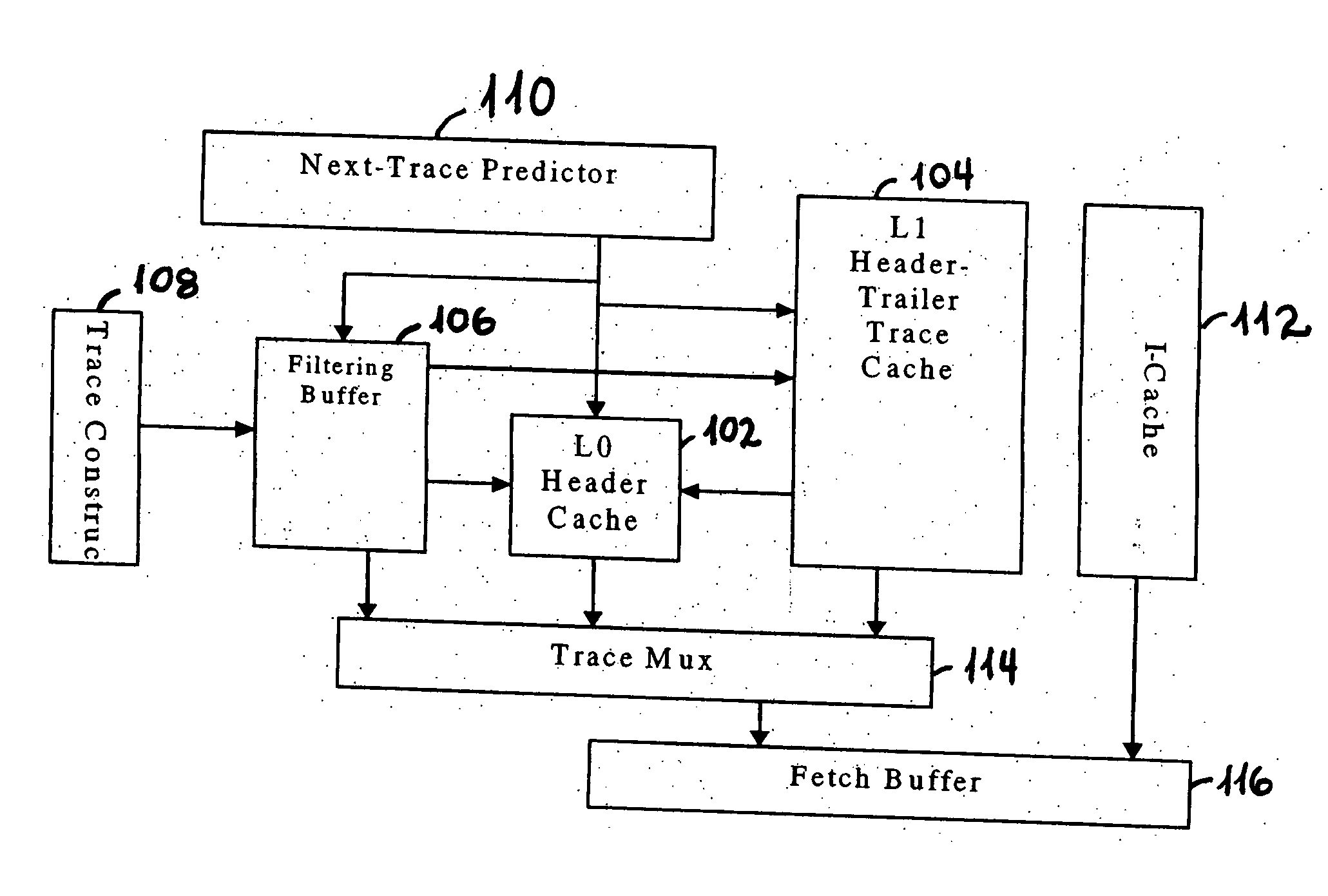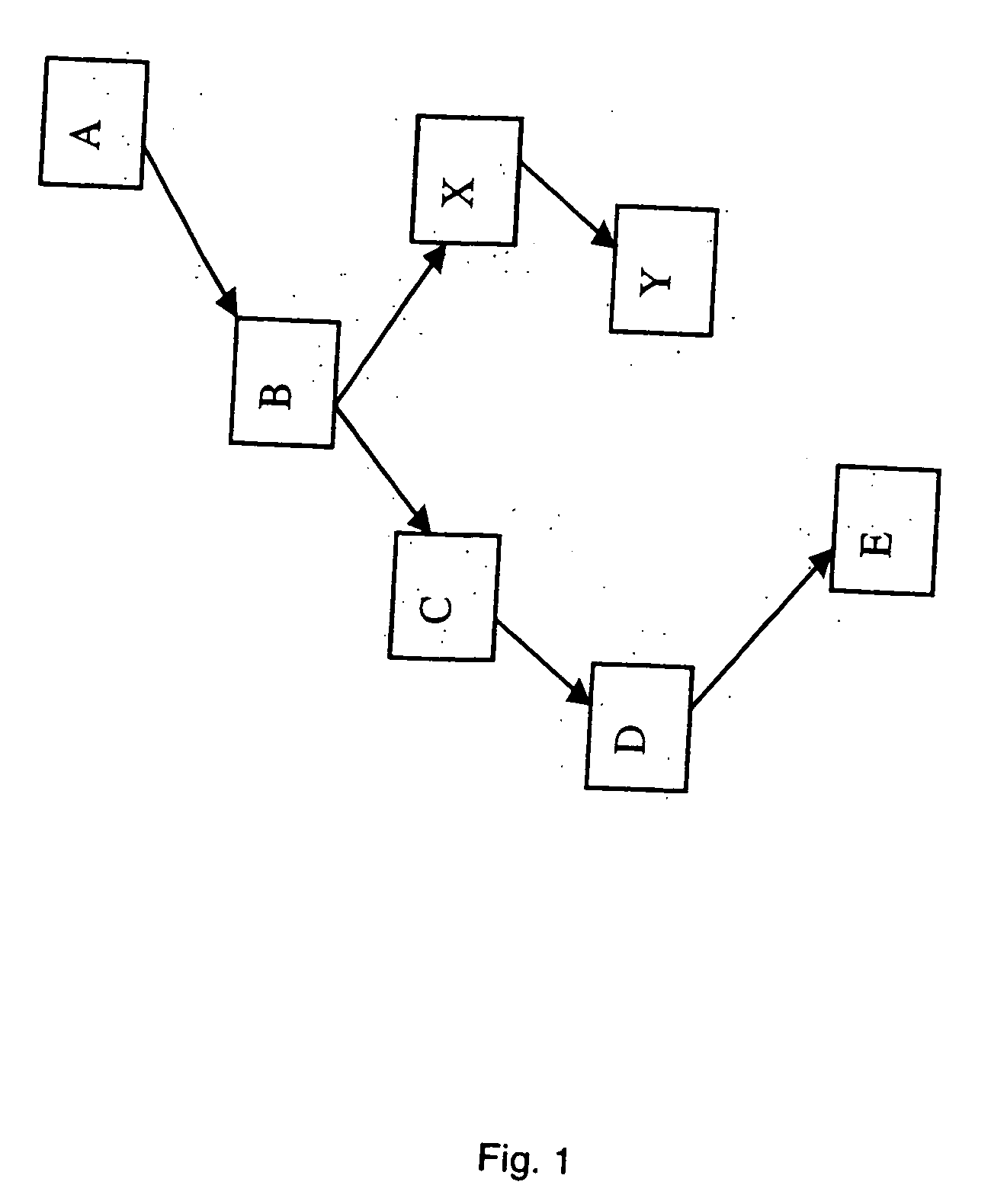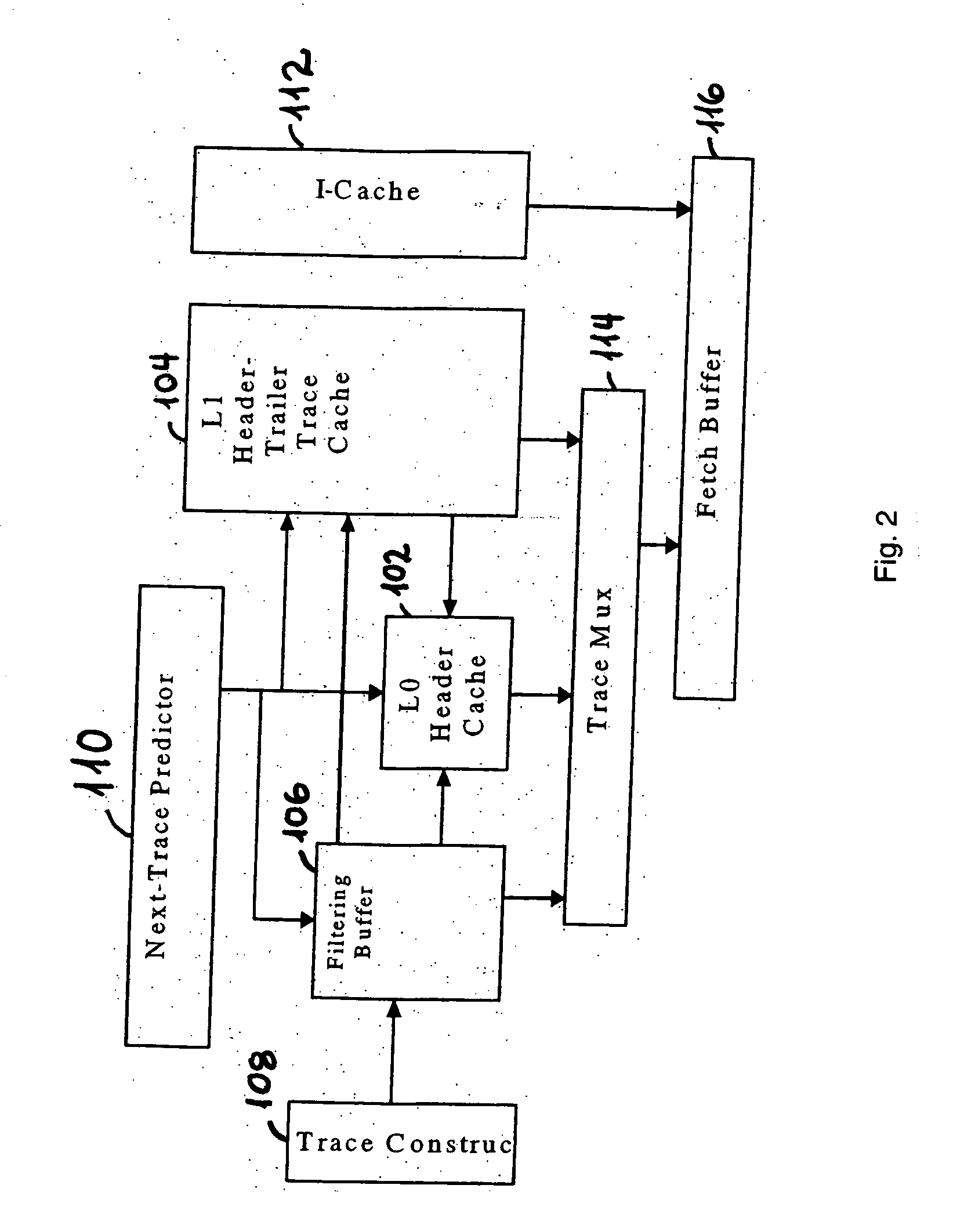Method and apparatus for an efficient multi-path trace cache design
- Summary
- Abstract
- Description
- Claims
- Application Information
AI Technical Summary
Benefits of technology
Problems solved by technology
Method used
Image
Examples
Embodiment Construction
[0024] There is proposed herein a novel trace cache design and organization to efficiently store and retrieve multi-path traces. A goal is to design a trace cache, which is capable of storing multi-path traces without significant duplication in the traces. Furthermore, the effective access latency of these traces is reduced.
[0025] A trace is divided into two parts: a header and a trailer. The header includes the first N instructions and the trailer is the remaining instructions. For example, in FIG. 1, the header includes AB, and the two trailers following this header are CDE and XY. The header-trailer trace cache uses this splitting of the traces to store the headers in a header bank and the trailers in trailer banks. The latency to access the header portion of the trace is further reduced using a multi-level trace cache organization.
[0026]FIG. 2 shows a high-level block diagram depicting operations of at least one embodiment of the present invention. A L0 header cache 102 stores...
PUM
 Login to View More
Login to View More Abstract
Description
Claims
Application Information
 Login to View More
Login to View More - R&D
- Intellectual Property
- Life Sciences
- Materials
- Tech Scout
- Unparalleled Data Quality
- Higher Quality Content
- 60% Fewer Hallucinations
Browse by: Latest US Patents, China's latest patents, Technical Efficacy Thesaurus, Application Domain, Technology Topic, Popular Technical Reports.
© 2025 PatSnap. All rights reserved.Legal|Privacy policy|Modern Slavery Act Transparency Statement|Sitemap|About US| Contact US: help@patsnap.com



